A Study of Heat Exchange Processes within the Channels of Disk Pulse Devices
Abstract
:1. Introduction
2. Materials and Methods
2.1. Analytical Studies of the Heat Exchange Process and Its Computer-Based Representation
- –
- The process in the disk pulse device is axially symmetrical; we neglect the changes in physical values along the angular coordinate (∂/∂φ = 0);
- –
- The process is of a steady-flow nature (time changes in physical values are insignificant ∂/∂t = 0);
- –
- Mass forces are neglected (ρ∙gi = 0);
- –
- The velocity component Vz is neglected as h << Rn;
- –
- The temperature gradient at the expense of convective heat transfer along axis z is neglected; heat transfer along axis r is taken into consideration only in terms of heat convection.
2.2. Structural Features of the Experimental Disk Pulse Heat Generator
- -
- t1, °C–temperature at the inlet to the heat exchanger (provided by an electronic contact MC–52,228 Mastercool thermometer);
- -
- t2, °C–temperature at the entrance to the disk pulse apparatus (provided by an electronic contact MC–52,228 Mastercool thermometer);
- -
- t3, °C–temperature at the outlet of the disk pulse apparatus (provided by an electronic contact MC – 52,228 Mastercool thermometer);
- -
- t4, °C–temperature at the exit of the heat exchanger (provided by an electronic contact MC–52,228 Mastercool thermometer);
- -
- P, Mpa–pressure in the working chamber of the disk heat generator (provided by a ДM 05100–01 M manometer, radial 0.6 MPa);
- -
- G, kg/s–flow rate of the heated medium (provided by an MTW-UA 25 vane counter for hot water);
- -
- n, min−1–engine speed (provided by a Guangdong T9Z-4 TMCON tachometer); and
- -
- Np.s., kW∙h– power spent (provided by an electric Nic 2102–02 M2B 5–60 A meter).
3. Results and Discussion
- The optimization of geometrical parameters of its working chamber based upon the results of mathematical modeling;
- The optimization of the parameters’ hydrodynamics and heat-exchanging processes (velocity, pressure, temperature) inside the working chamber of the heat generator;
- The application of a multistage system of pulse action on the heat carrier; and
- The application of the automatic controls for the heating system involving the integrated heat generator in relation to pulse action on the heat carrier.
4. Conclusions
Author Contributions
Funding
Conflicts of Interest
References
- Lago, L.I.; Ponta, F.L.; Chen, L. Advances and trends in hydrokinetic turbine systems. Energy Sustain. Dev. 2010, 14, 287–296. [Google Scholar] [CrossRef]
- Myers, L.E.; Bahaj, A.S. An experimental investigation simulating flow effects in first generation marine current energy converter arrays. Renew. Energy 2012, 37, 28–36. [Google Scholar] [CrossRef] [Green Version]
- Checko, J.; Urych, T.; Magdziarczyk, M.; Smolinski, A. Resource Assessment and Numerical Modeling of CBM Extraction in the Upper Silesian Coal Basin, Poland. Energies 2020, 13, 2153. [Google Scholar] [CrossRef]
- Nikolsky, V.; Oliynyk, O.; Ved, V.; Svietkina, O.; Pugach, A.; Shvachka, A. Development and investigation of energy efficient unified equipment for energy technological manufacturers. East. Eur. J. Enterp. Technol. 2018, 3, 59–65. [Google Scholar] [CrossRef] [Green Version]
- Meng, Q.C.; Zhang, Z.H.; Liu, J.B. Numerical Calculation for Subsonic Compressible Supercavitating Flow over Disk-Cavitator. Appl. Mech. Mater. 2010, 34–35, 737–742. [Google Scholar] [CrossRef]
- Aben, E.; Markenbayev, Z.H.; Khairullaev, N.; Myrzakhmetov, S.; Aben, K.H. Study of change in the leaching solution activity after treatment with a cavitator. Min. Miner. Depos. 2019, 13, 114–120. [Google Scholar] [CrossRef] [Green Version]
- Hamid, U.; Rauf, A.; Ahmed, U.; Selim Arif Sher Shah, M.; Ahmad, N. Techno-economic assessment of process integration models for boosting hydrogen production potential from coal and natural gas feedstocks. Fuel 2020, 266, 117111. [Google Scholar] [CrossRef]
- Pivnyak, G.; Dychkovskyi, R.; Bobyliov, O.; Cabana, C.E.; Smoliński, A. Mathematical and Geomechanical Model in Physical and Chemical Processes of Underground Coal Gasification. Solid State Phenom. 2018, 277, 1–16. [Google Scholar] [CrossRef]
- Smoliński, A.; Howaniec, N. Chemometric modelling of experimental data on co-gasification of bituminous coal and biomass to hydrogen-rich gas. Waste Biomass Valorization 2017, 8, 1577–1586. [Google Scholar] [CrossRef] [Green Version]
- Iwaszenko, S.; Howaniec, N.; Smoliński, A. Study of numerical models of underground coal gasification. Energy 2019, 166, 972–978. [Google Scholar] [CrossRef]
- Dychkovskyi, R.O. Determination of the rock subsidence spacing in the well underground coal gasification. Naukovyi Visnyk Natsionalnoho Hirnychoho Universytetu 2015, 6, 30–36. [Google Scholar]
- Basu, R. Evaluation of some renewable energy technologies. Min. Miner. Depos. 2017, 11, 29–37. [Google Scholar] [CrossRef] [Green Version]
- Goncharenko, L.; Ryzhakova, A.; Sedova, N.; Efimov, I.; Akulinin, F. Survey of the world practice of implementing energy-efficient technologies in terms of mining enterprises. Razrab. Mestorozhdenii 2019, 13, 63–71. [Google Scholar] [CrossRef]
- Dellicompagni, P.; Franco, J.; Heim, D.; Wieprzkowicz, A. Numerical modeling of phase change materials using simusol software. Appl. Therm. Eng. 2020, 170, 114772. [Google Scholar] [CrossRef]
- Park, J.T.; Cutbirth, J.M.; Brewer, W.H. Hydrodynamic Performance of the Large Cavitation Channel (LCC). In Proceedings of the ASME/JSME 2003 4th Joint Fluids Summer Engineering Conference, Honolulu, HI, USA, 6–10 July 2003; American Society of Mechanical Engineers: New York, NY, USA, 2003; pp. 87–100. [Google Scholar]
- Lin, J. Modelling hydrodynamic processes in tidal stream energy extraction. J. Hydrodyn. Ser. B 2016, 28, 1058–1064. [Google Scholar]
- Dealy, J.M.; Wissbrun, K.F. Melt Rheology and Its Role in Plastics Processing: Theory and Applications; Springer Science & Business Media: Berlin/Heidelberg, Germany, 2012; p. 244. [Google Scholar]
- Sarycheva, L. Using GMDH in ecological and socio-economical monitoring problems. Syst. Anal. Model. Simul. 2003, 43, 1409–1414. [Google Scholar] [CrossRef]
- Nikolsky, V.; Kuzyayev, I.; Alieksandrov, O.; Ved, V.; Pugach, A.; Yaris, V.; Ptitsyn, S.; Lopatin, V. Analytical and experimental studies into the processes of hydrodynamics and heat exchange in the channels of disk pulse devices. East. Eur. J. Enterp. Technol. 2019, 4, 15–23. [Google Scholar] [CrossRef]
- Bellout, H.; Bloom, F. Incompressible Bipolar and Non-Newtonian Viscous Fluid Flow; Springer: Berlin/Heidelberg, Germany, 2014. [Google Scholar] [CrossRef]
- Böhme, G. Principles of continuum mechanics. In Non-Newtonian Fluid Mechanics; North-Holland Series in Applied Mathematics and Mechanics; Elsevier: Amsterdam, The Netherlands, 1987; pp. 1–43. [Google Scholar]
- Chernai, A.V.; Sobolev, V.V.; Chernai, V.A.; Ilyushin, M.A.; Dlugashek, A. Laser ignition of explosive compositions based on di-(3-hydrazino-4-amino-1,2,3-triazole)-copper(II) perchlorate. Combust. Explos. Shock Waves 2003, 39, 335–339. [Google Scholar] [CrossRef]
- Golovchenko, A. Automated Monitoring of Physical Processes of Formation of Burden Material Surface and Gas Flow in Blast Furnace. Solid State Phenom. 2018, 277, 54–65. [Google Scholar] [CrossRef]
- Falshtynskyi, V.S.; Dychkovskyi, R.O.; Saik, P.B.; Lozynskyi, V.H.; Cabana, E.C. Formation of thermal fields by the energy-chemical complex of coal gasification. Naukovyi Visnyk Natsionalnoho Hirnychoho Universytetu 2017, 5, 36–42. [Google Scholar]
- Bondarenko, V.; Tabachenko, M.; Wachowicz, J. Possibility of production complex of sufficient gasses in Ukraine. New Tech. Technol. Min. Proc. Sch. Undergr. Min. 2010, 3, 113–119. [Google Scholar] [CrossRef]
- Golovchenko, A.; Dychkovskyi, R.; Pazynich, Y.; Edgar, C.C.; Howaniec, N.; Jura, B.; Smolinski, A. Some aspects of the control for the radial distribution of burden material and gas flow in the blast furnace. Energies 2020, 13, 923. [Google Scholar] [CrossRef] [Green Version]
- Chećko, J.; Urych, T.; Magdziarczyk, M.; Smoliński, A. Research on the processes of injecting CO2 into coal seams with CH4 recovery using horizontal wells. Energies 2020, 13, 416. [Google Scholar] [CrossRef] [Green Version]
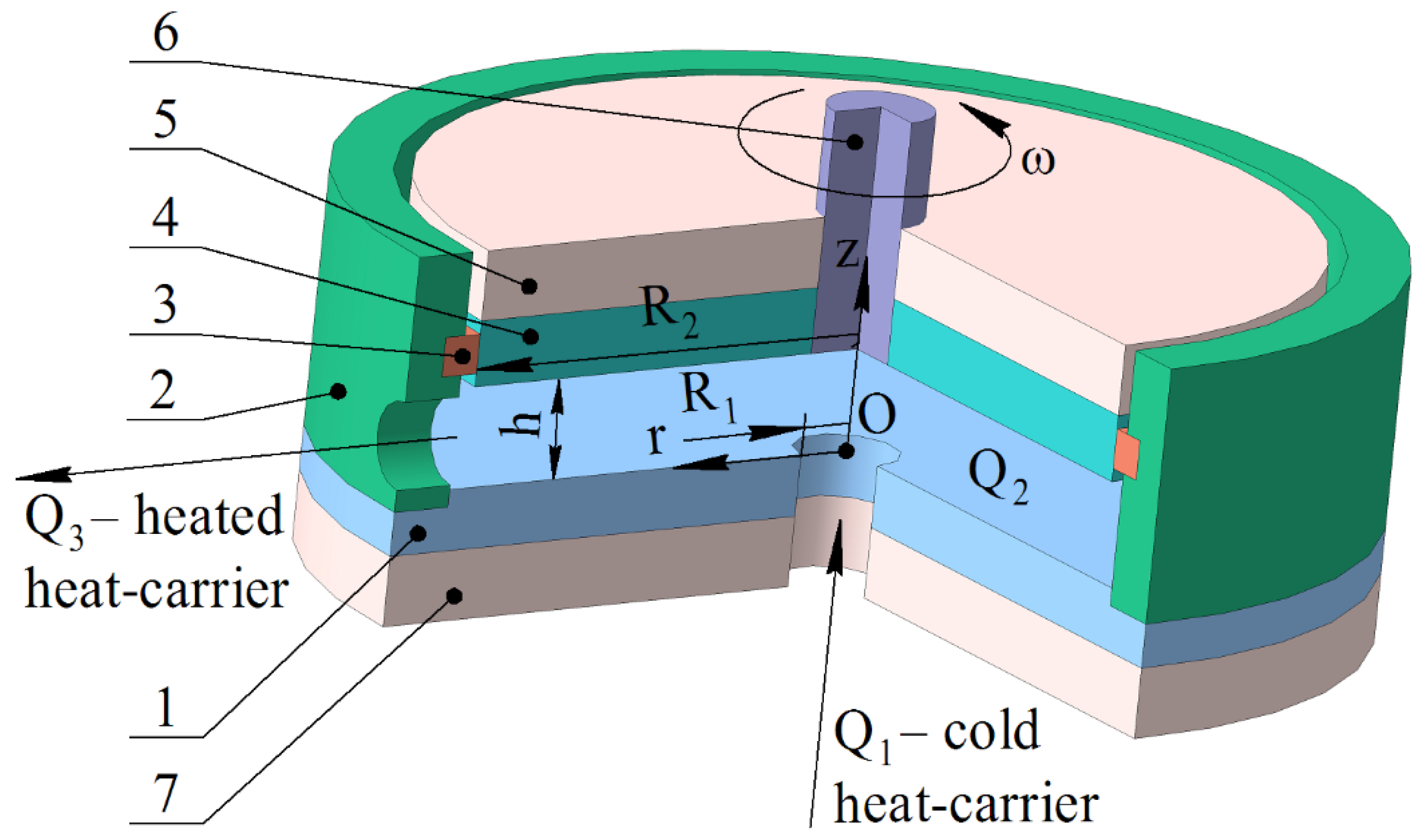
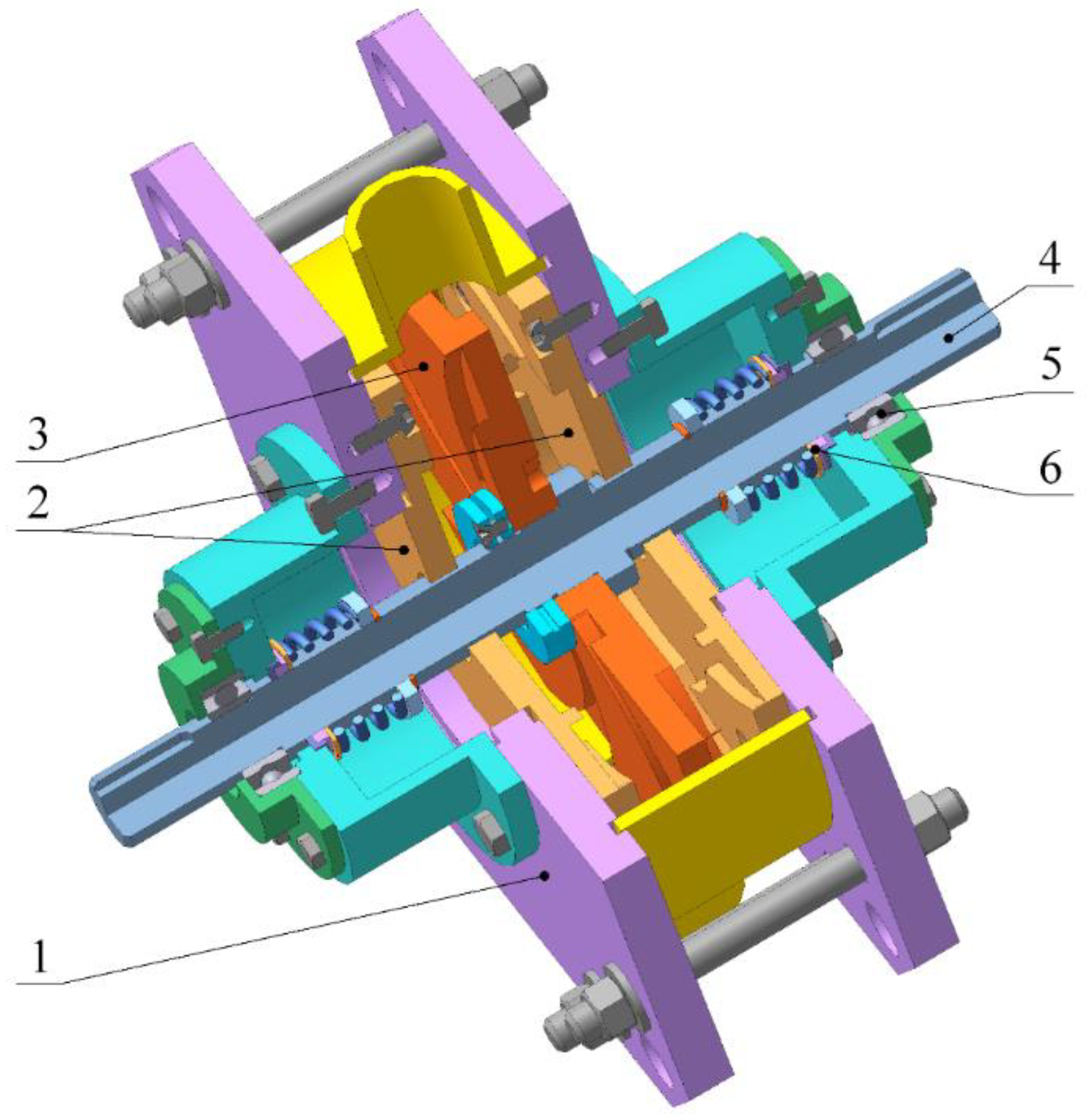
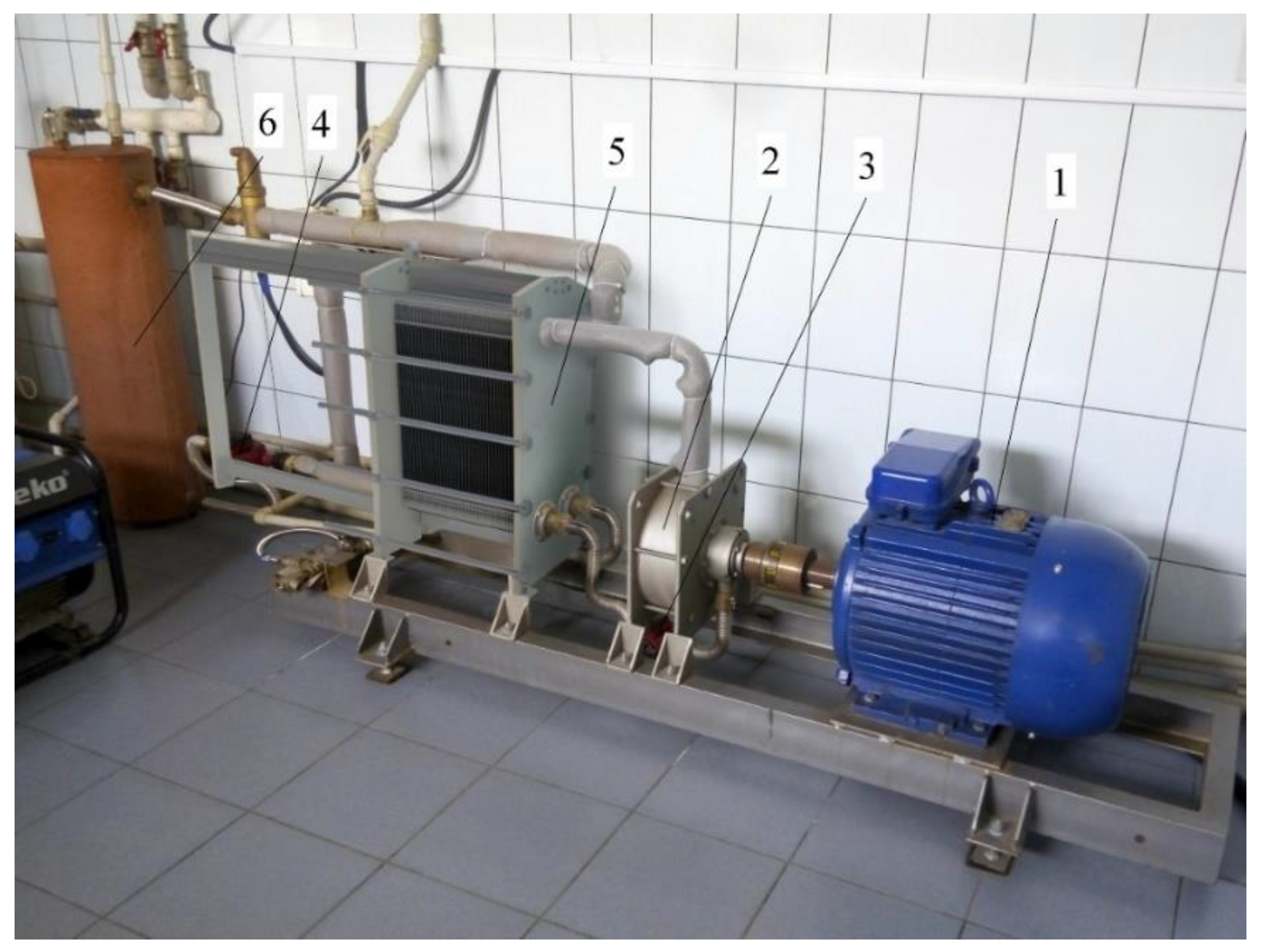
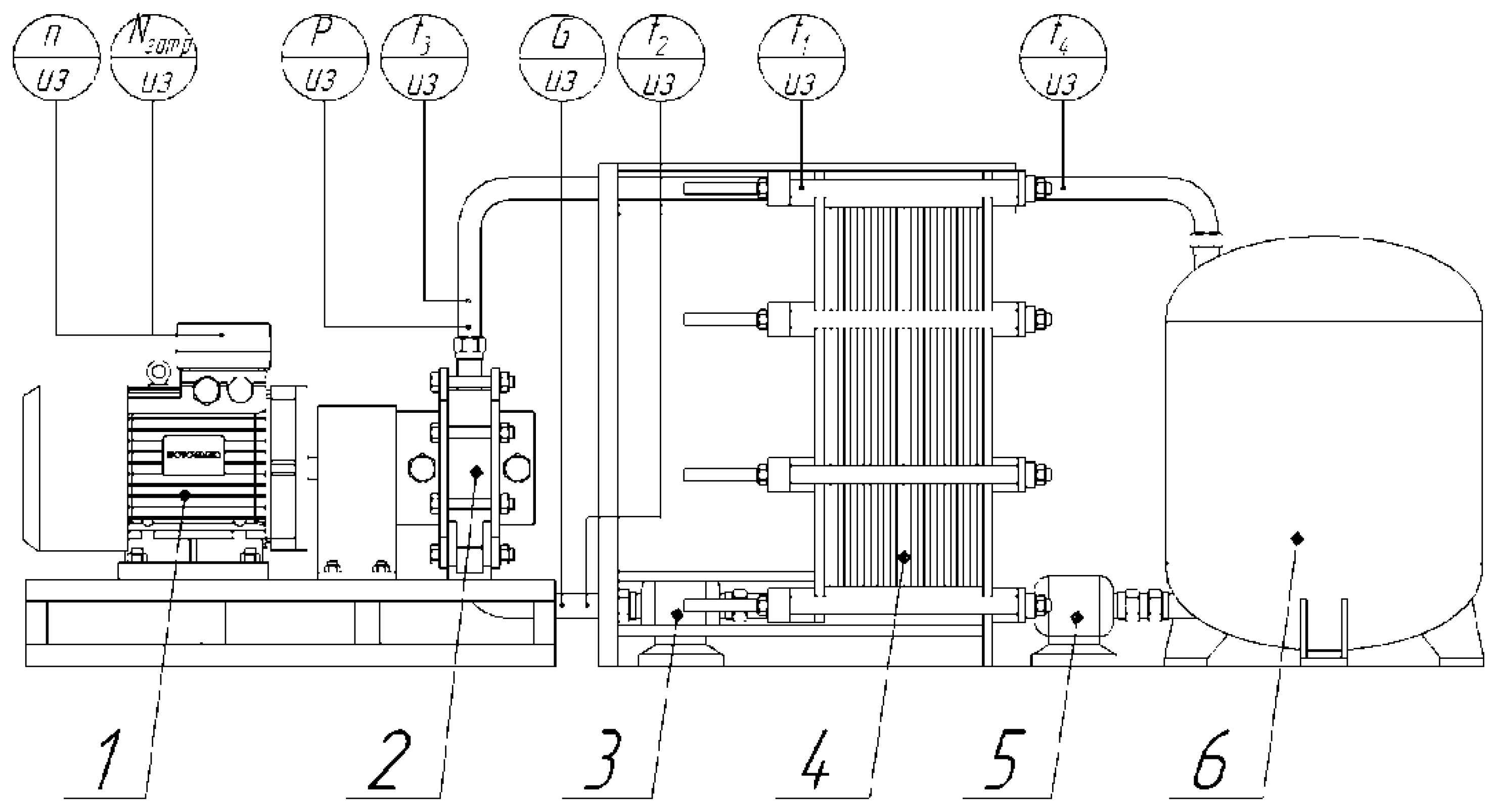
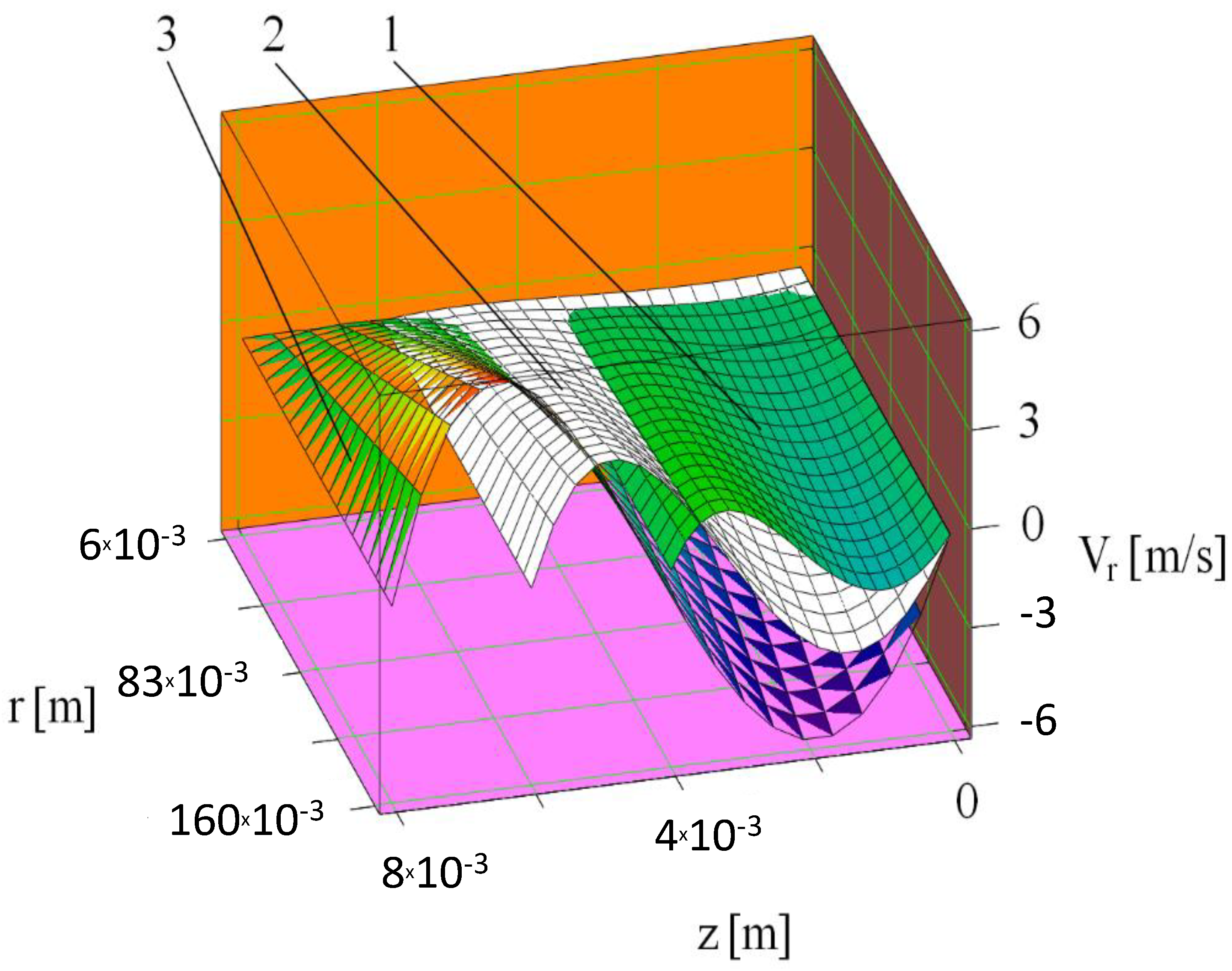
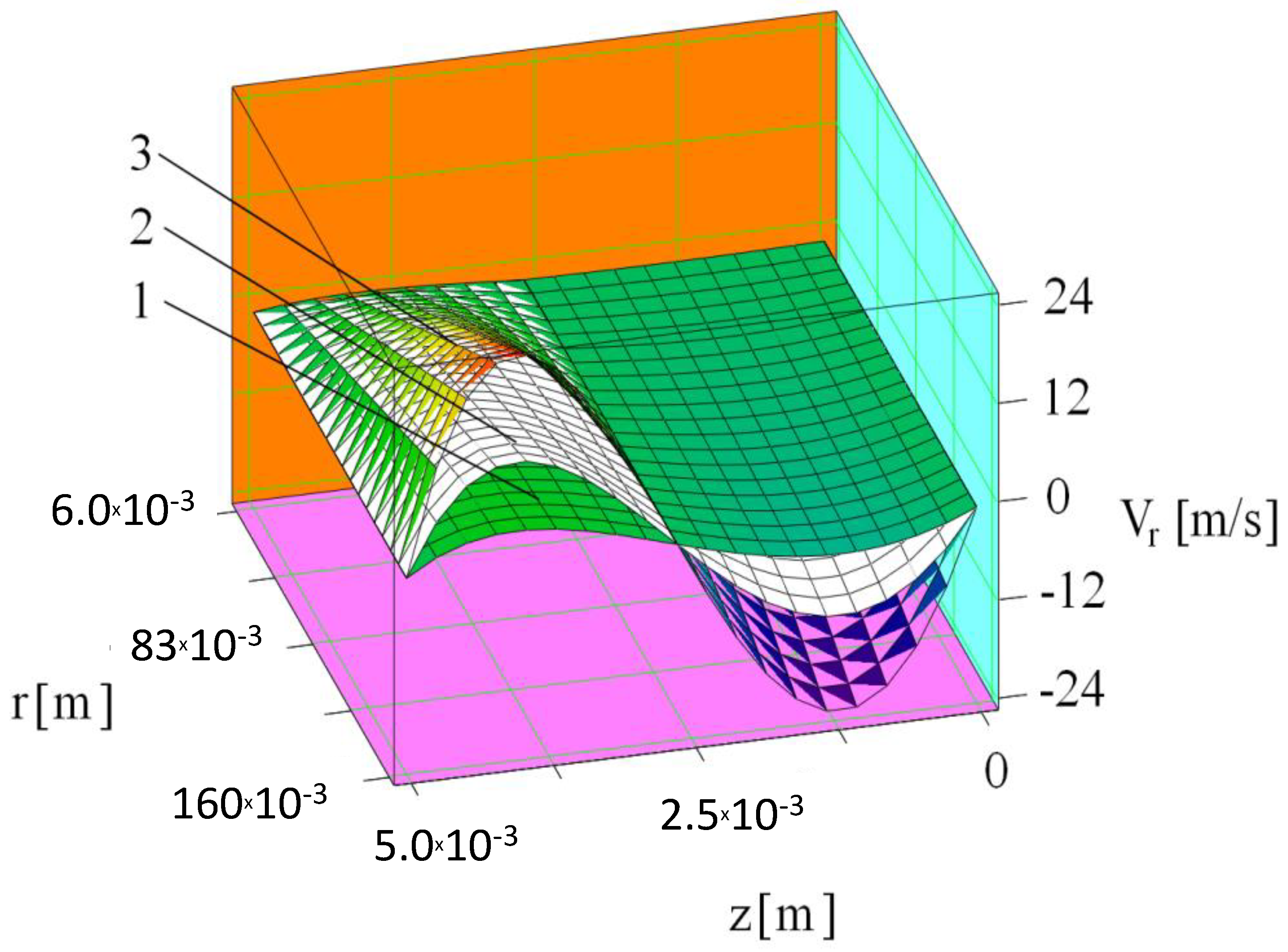
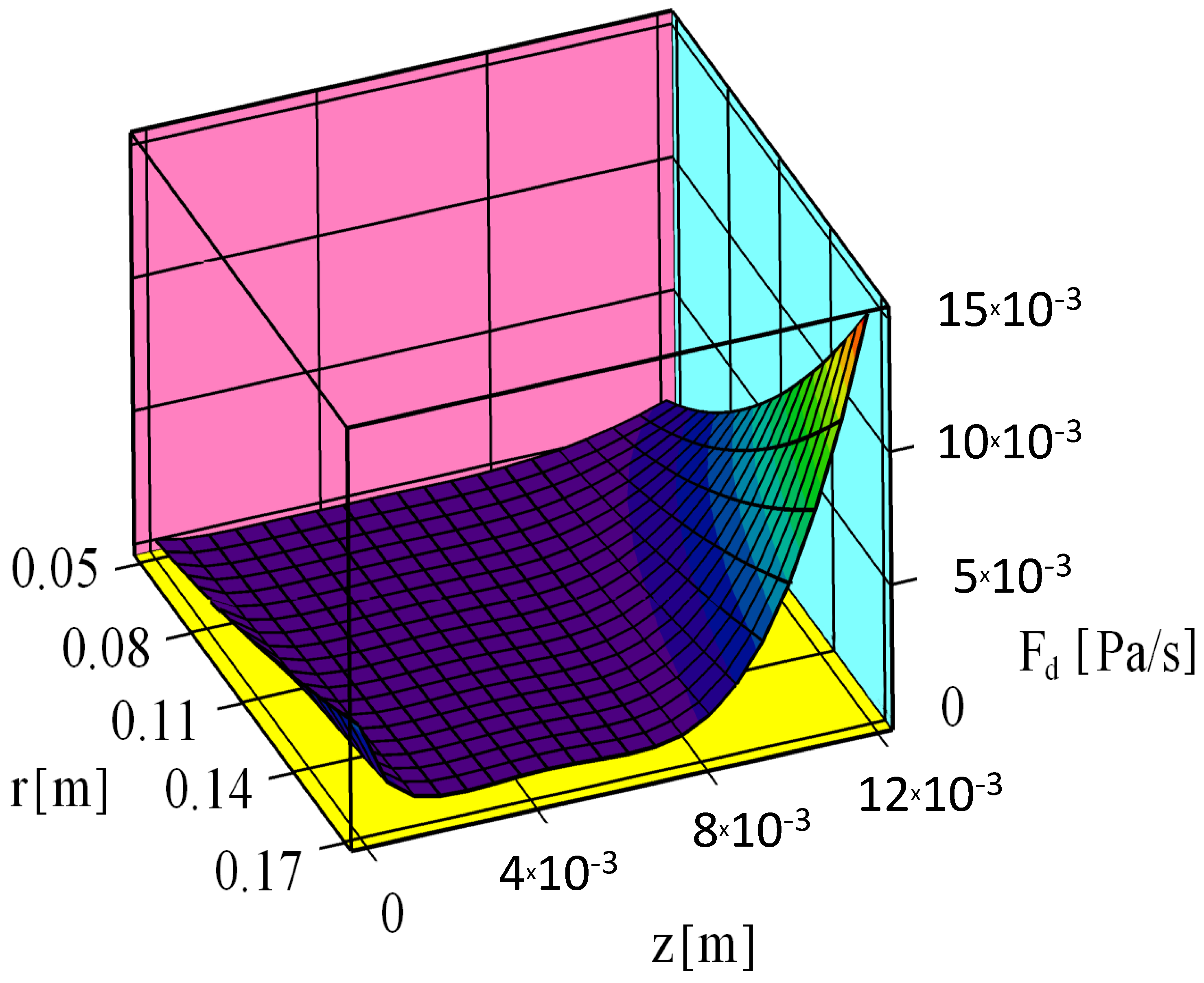


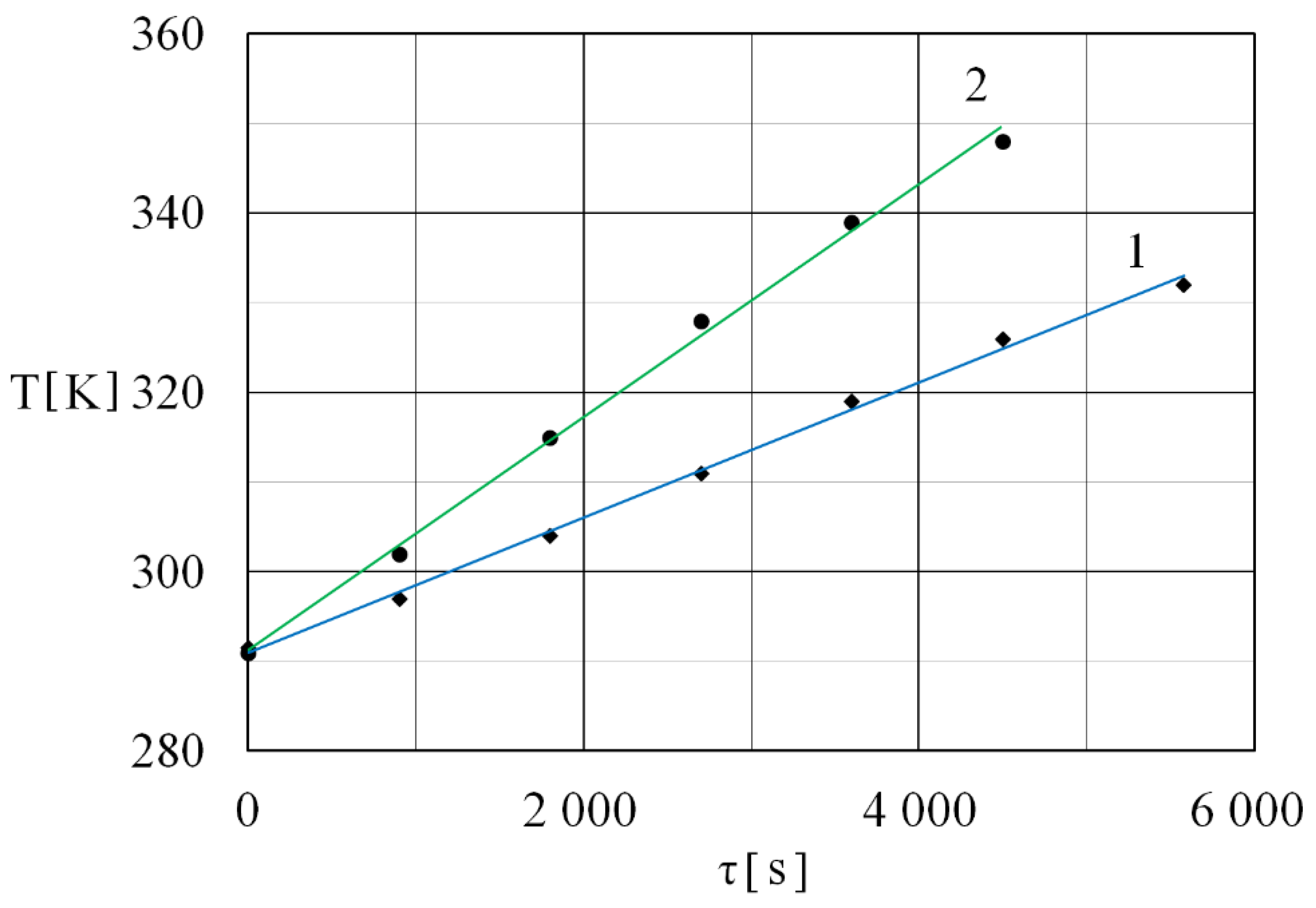
© 2020 by the authors. Licensee MDPI, Basel, Switzerland. This article is an open access article distributed under the terms and conditions of the Creative Commons Attribution (CC BY) license (http://creativecommons.org/licenses/by/4.0/).
Share and Cite
Nikolsky, V.; Kuzyayev, I.; Dychkovskyi, R.; Alieksandrov, O.; Yaris, V.; Ptitsyn, S.; Tikhaya, L.; Howaniec, N.; Bak, A.; Siudyga, T.; et al. A Study of Heat Exchange Processes within the Channels of Disk Pulse Devices. Energies 2020, 13, 3492. https://doi.org/10.3390/en13133492
Nikolsky V, Kuzyayev I, Dychkovskyi R, Alieksandrov O, Yaris V, Ptitsyn S, Tikhaya L, Howaniec N, Bak A, Siudyga T, et al. A Study of Heat Exchange Processes within the Channels of Disk Pulse Devices. Energies. 2020; 13(13):3492. https://doi.org/10.3390/en13133492
Chicago/Turabian StyleNikolsky, Valeriy, Ivan Kuzyayev, Roman Dychkovskyi, Oleksandr Alieksandrov, Vadim Yaris, Serhiy Ptitsyn, Ludmila Tikhaya, Natalia Howaniec, Andrzej Bak, Tomasz Siudyga, and et al. 2020. "A Study of Heat Exchange Processes within the Channels of Disk Pulse Devices" Energies 13, no. 13: 3492. https://doi.org/10.3390/en13133492
APA StyleNikolsky, V., Kuzyayev, I., Dychkovskyi, R., Alieksandrov, O., Yaris, V., Ptitsyn, S., Tikhaya, L., Howaniec, N., Bak, A., Siudyga, T., Jura, B., Cabana, E., Szymanek, A., & Smoliński, A. (2020). A Study of Heat Exchange Processes within the Channels of Disk Pulse Devices. Energies, 13(13), 3492. https://doi.org/10.3390/en13133492





